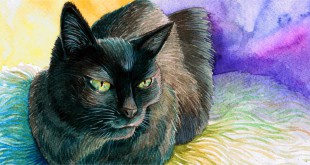Aster — Aster (syn. Diplopappus Cass.) is a genus of flowering plants in the family Asteraceae. The genus once contained nearly 600 species in Eurasia and North America, but after morphologic and molecular research on the genus during the 1990s, it was decided that the North American species are better treated in a series of other genera. After this split …
Read More »Aspens
Aspens — Aspens are trees of the willow family and comprise a section of the poplar genus, Populus sect. Populus. The five typical aspens are all native to cold regions with cool summers, in the far north of the Northern Hemisphere, extending south only at high altitudes in mountains. The White Poplar by contrast is native to much warmer regions, …
Read More »Asparagus Fern
Asparagus Fern — Asparagus densiflorus (Sprenger’s Asparagus; syn. Asparagus aethiopicus L., Asparagopsis densiflora Kunth, Protasparagus aethiopicus (L.) Oberm., Protasparagus densiflorus (Kunth) Oberm.) is a weed native to South Africa, which is often used as an ornamental plant. Asparagus densiflorus is toxic to domestic housecats. Also known as ‘Sprengers Asparagus’, named after Carl Ludwig Sprenger who made it popular in Europe …
Read More »Domestic Animals Coloring Pages
Domestic Animals Coloring Page list of domestic animals, and also includes a list of animals which are or may be undergoing the process of domestication and/or have an extensive relationship with humans beyond simple predation. Domestic Animals Coloring Pages
Read More »Asparagus
Asparagus — Asparagus officinalis is a flowering plant species in the genus Asparagus from which the popular vegetable known as asparagus is obtained. It is native to most of Europe, northern Africa and western Asia. It is now also widely cultivated as a vegetable crop. Asparagus is a herbaceous perennial plant growing to 100-150 cm tall, with stout stems with …
Read More »Ash, Flowering
Ash, Flowering — An ash can be any of four different tree genera from four very distinct families, but originally and most commonly refers to trees of the genus Fraxinus (from Latin “ash tree”) in the olive family Oleaceae. The ashes are usually medium to large trees, mostly deciduous though a few subtropical species are evergreen. The leaves are opposite …
Read More »Ash, European
Ash, European — Fraxinus excelsior (Ash; also European Ash or Common Ash on occasion to distinguish it from other ash species), is a species of Fraxinus native to most of Europe with the exception of northern Scandinavia and southern Iberia, and also southwestern Asia from northern Turkey east to the Caucasus and Alborz mountains. The northernmost location is in the …
Read More »Ash, White
Ash, White — Fraxinus americana (White Ash or American Ash) is a species of Fraxinus native to eastern North America found in mesophytic hardwood forests from Nova Scotia west to Minnesota, south to northern Florida, and southwest to eastern Texas. It is a large deciduous tree growing to 20–30 m tall, exceptionally to 50 m, with a trunk 0.5–1.8 m …
Read More »Arum
Arum — Arum is a genus of about 25 species of flowering plants in the family Araceae, native to Europe, northern Africa, and western Asia, with the highest species diversity in the Mediterranean region. They are rhizomatous, herbaceous perennial plants growing to 20-60 cm tall, with saggitate (arrowhead-shaped) leaves 10-55 cm long. The flowers are produced in a spadix, surrounded …
Read More »Artichoke
Artichoke — The Globe Artichoke (Cynara scolymus) is a perennial thistle originating in southern Europe around the Mediterranean. It grows to 1.5-2 m tall, with arching, deeply lobed, silvery glaucous-green leaves 50–80 cm long. The flowers develop in a large head from an edible bud about 8–15 cm diameter with numerous triangular scales; the individual florets are purple. The edible …
Read More » Kids Portal For Parents India Kids Network
Kids Portal For Parents India Kids Network
